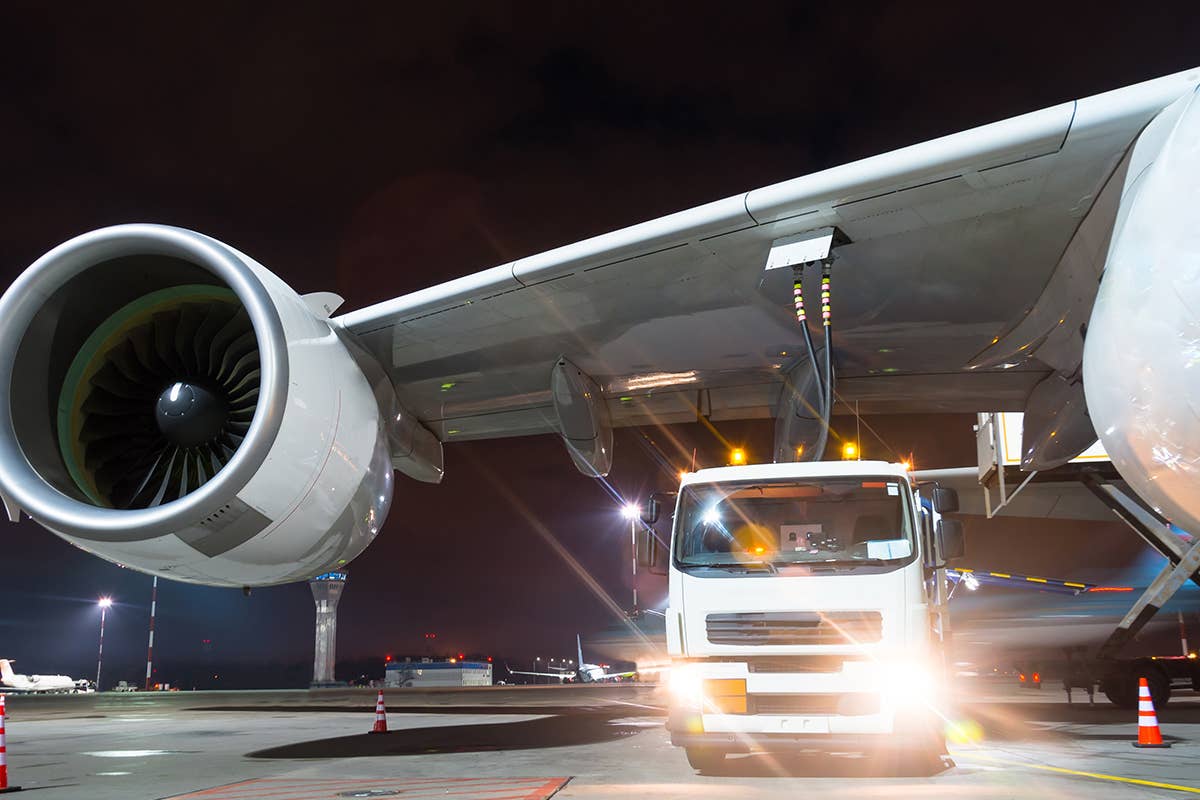European Parliament Gives SAF a Legal Boost
Sustainable aviation fuel is on track to be much more widely available.

By 2050, new laws will require 87 percent of aviation fuel at EU airports to be SAF. [Shutterstock]
The European Parliament is bolstering support for using more sustainable aviation fuel (SAF) at airports throughout much of Europe.
On July 7, parliament approved draft rules to require mandatory minimum percentages of SAF available at EU airports. Mandates for the percentage of SAF as a share of all available aviation fuels would increase in three steps:
- 2025: 2 percent share of SAF
- 2040: 37 percent share of SAF
- 2050: 85 percent share of SAF
The new rules include taking into account the potential of electricity and hydrogen in the overall fuel mix. Next, the European Parliament draft rules go to EU member states to negotiate details under final legislation aimed at implementing the program.
'Ambitious Signal’
According to the EU, civil aviation accounts for 13.4 percent of total CO2 emissions from EU transportation.
“Aviation is one of the hardest sectors to decarbonize,” said European Parliament member Soren Gade of Denmark in a statement. “Today we showed how to do this and sent a strong and ambitious signal to the citizens of Europe. We heard you when you called for climate action, and we are working as much as we can to achieve a truly green Europe.”
A key challenge to increased use of SAF has been its limited production capacity. For this reason, International Air Transport Association (IATA) director general Willie Walsh has called for government incentives such as those approved by the European Parliament.
“People want to see aviation decarbonize,” Walsh said in a statement on June 21. “They expect the industry and governments to be working together. The industry’s determination to achieve net zero by 2050 is firm. How would governments explain the failure to reach an agreement to their citizens?”
The Air Line Pilots Association (ALPA)—the largest airline pilot union in the world—has said it fully supports IATA’s policies for achieving carbon-neutral growth by cutting carbon emissions by 50 percent by 2050, compared to 2005 levels.
Under the draft rules, European lawmakers amended the definition of SAF, which generally includes certain biofuels produced from agricultural or forestry residues, algae, bio-waste, or used cooking oil. The proposal would exclude fuels based on feed and food crops as well as fuels made from palm oil, soy-derived materials, and soap stock.
The push for SAF is part of the EU’s broader “Fit for 55 in 2030” strategy, which aims to cut net greenhouse gas emissions by at least 55 percent by 2030, compared to 1990 levels. A 2021 EU Climate Law puts member nations on track for climate neutrality by 2050.
Enormous Growth Projected
The news comes as airlines increase their use of SAF, and analysts are projecting huge market growth by 2030. Demand for SAF is expected to balloon from $216 million in 2021 to more than $14 billion nine years from now, according to a report released Monday by market research company, The Brainy Insights.
The North American SAF market segment is currently the largest, making up more than 47 percent, according to the report. Europe ranks second.
American Airlines Gets CORSIA SAF
The International Civil Aviation Organization (ICAO) has developed a carbon offset and reduction system called CORSIA to help airlines lower CO2 emissions for international flights.
For the first time, a commercial airline has taken delivery of a certified batch of CORSIA SAF. CORSIA stands for Carbon Offsetting and Reduction Scheme for International Aviation.
Top SAF producer Neste delivered the CORSIA SAF to American Airlines (NASDAQ: AAL) at San Francisco International Airport (KSFO), Neste announced Tuesday.
“American is proud to partner with Neste to demonstrate how SAF can meet the robust sustainability standards that ICAO has established for CORSIA,” said a statement from Jill Blickstein, head of environment, social, and government at American Airlines. “Our work together will also help demonstrate to American’s customers that SAF can meet these high standards.”

Sign-up for newsletters & special offers!
Get the latest FLYING stories & special offers delivered directly to your inbox






